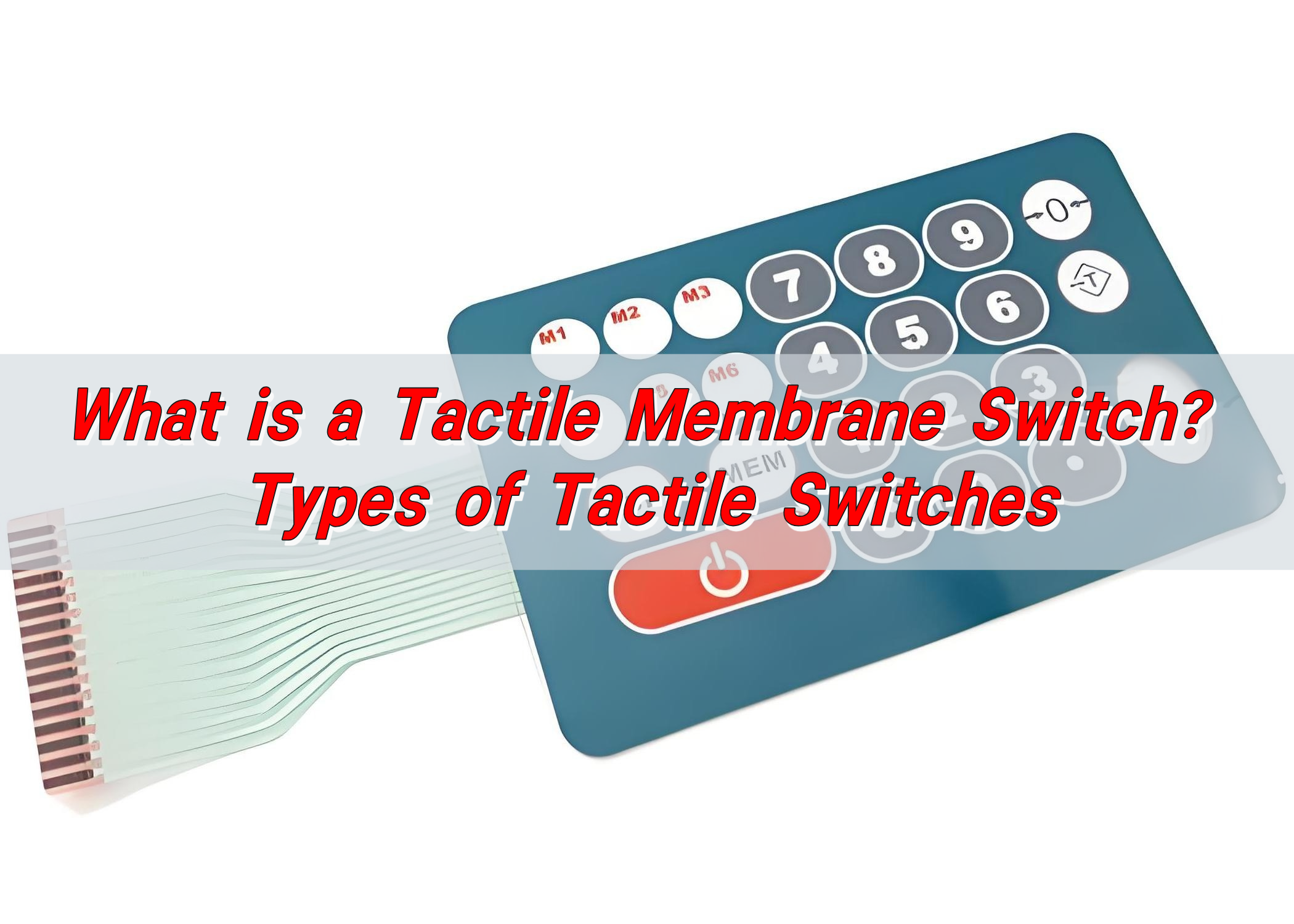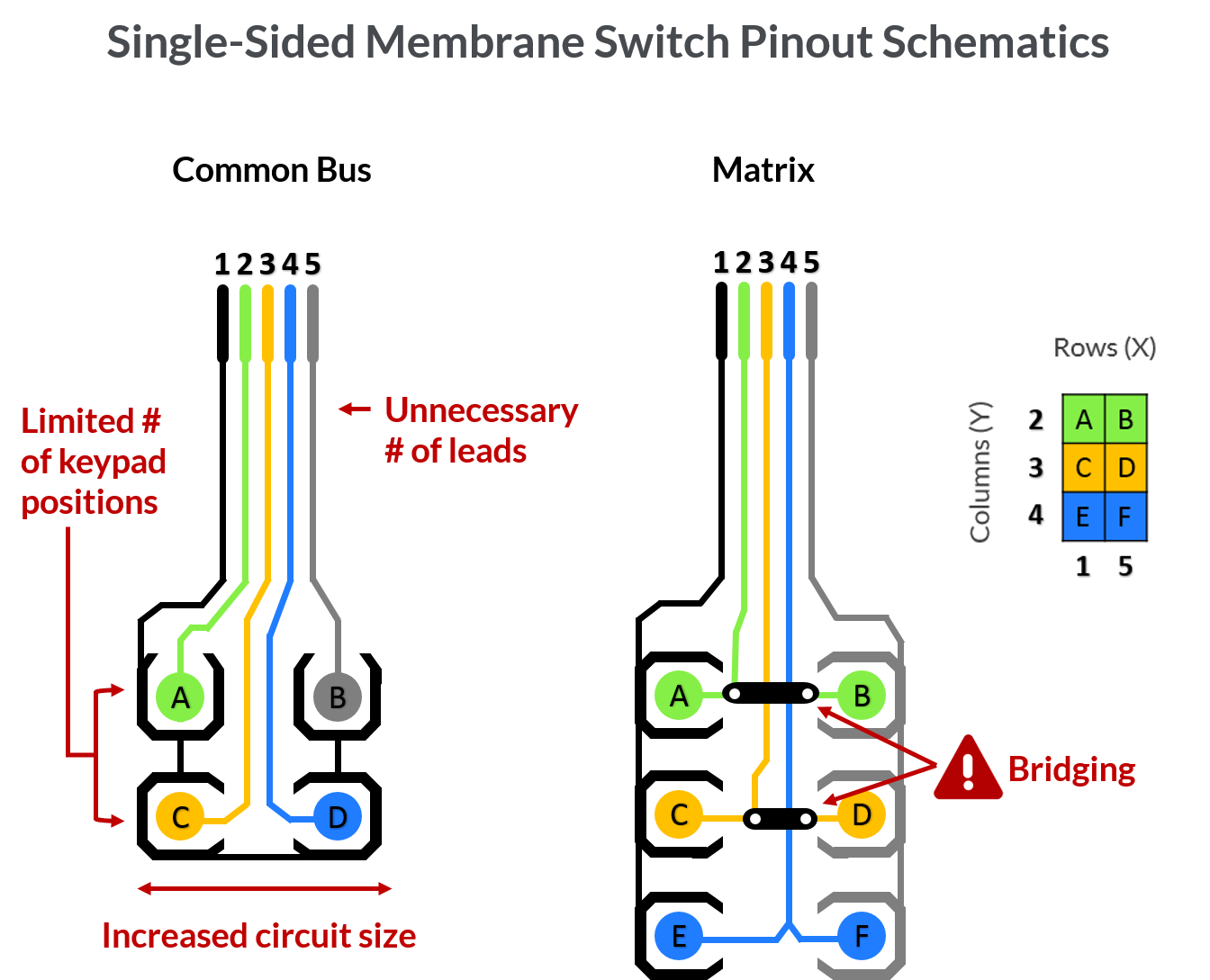The Production Process Behind Membrane Layer Switch: What You Required to Know
The manufacturing procedure behind membrane changes combines mindful style, product choice, and quality assurance. It begins with recognizing the ins and outs of membrane layer switch layout and advances via various phases, consisting of material selections and printing techniques. Each stage plays an essential function in ensuring performance and durability. The complexities of layer building and the extensive testing standards may reveal understandings that are not right away apparent. What lies past these fundamental aspects?
Understanding Membrane Layer Switch Over Style
Membrane switches may appear easy at very first glimpse, their style includes elaborate factors to consider that assure capability and durability. The design process begins with a comprehensive understanding of individual demands, including the interface's designated application and environmental elements. Functional designs is a crucial element, as the layout should help with ease of use while ensuring that responsive responses fulfills individual expectations.Moreover, the layering of elements, such as graphic overlays, adhesive layers, and conductive traces, must be specifically crafted. membrane switch. This layered configuration not only affects the button's responsiveness however also impacts its long life. Interest is provided to the sealing techniques used to secure against moisture and dirt, which might compromise efficiency. Furthermore, design considerations reach looks, where color pattern and aesthetic clearness enhance customer experience. Eventually, the design of membrane layer changes equilibriums performance, user experience, and longevity, making sure that they meet the needs of different applications effectively
Products Used in Membrane Layer Switch Production
When choosing products for membrane button manufacturing, it is crucial to consider both efficiency and sturdiness. The key materials consist of polyester and polycarbonate films, which give flexibility and toughness. These films are commonly coated with glue to ensure appropriate bonding to substrates. Conductive inks, usually made up of silver or carbon, are vital for developing electrical links within the button, enabling reputable operation.Additionally, a safety layer, such as a tough coat, is regularly put on boost scrape resistance and long life. The selection of backing product, such as acrylic or foam, can substantially affect the switch's responsive feel and total individual experience. Furthermore, numerous environmental elements, consisting of temperature and humidity, must lead product selection to ensure peak efficiency in details applications. Inevitably, the appropriate mix of products contributes to the membrane switch's functionality and lifespan, making informed choices vital for makers.
The Printing Refine: Creating Video and Text
The printing procedure in membrane switch manufacturing plays a considerable function in producing premium graphics and text. Different graphic design techniques are employed to assure aesthetic allure and capability, while cautious ink choice techniques are necessary for longevity and efficiency. Recognizing these aspects is essential for achieving best outcomes in membrane layer switch design.
Graphic Style Techniques
Graphic design strategies play a necessary function in the printing process of membrane layer switches, as they specify exactly how graphics and message will eventually appear on the last product. Reliable graphic design includes the tactical usage of designs, shades, and font styles to improve readability and aesthetic allure. Developers typically utilize vector graphics for scalability, making sure that images continue to be sharp at various dimensions. Additionally, interest to contrast and alignment is important, as it influences user interaction and visual quality. The unification of branding aspects, such as logo designs, must be managed with like maintain brand honesty. Overall, thoughtful graphic layout techniques contribute significantly to the capability and beauty of membrane layer buttons, impacting user experience and item efficiency.
Ink Option Methods
Choosing the ideal ink is vital for attaining the wanted visual quality and toughness in membrane layer button manufacturing. Various ink types are utilized, including solvent-based, water-based, and UV-curable inks. Each type uses distinctive features, such as flexibility, adhesion, and resistance to environmental elements. Solvent-based inks are commonly preferred for their toughness and lively shades, while water-based inks are a lot more ecologically friendly however may have limitations in adhesion. UV-curable inks provide rapid healing and durable efficiency. Furthermore, color matching techniques guarantee that the picked inks straighten with layout requirements. Eventually, the option of ink must consider variables such as application approach, substratum compatibility, and end-use requirements to achieve premium outcomes in membrane switch graphics and message.
Layer Building And Construction and Setting Up

Product Option Refine
A mindful selection of materials is essential in the manufacturing process of membrane switches, as it directly influences functionality and sturdiness. The main products used include polyester, polycarbonate, and various conductive inks. Polyester is frequently favored for its outstanding resistance to chemicals and abrasion, making it appropriate for severe atmospheres. Polycarbonate, on the other hand, provides superior clarity and influence resistance, which is advantageous for applications calling for presence and effectiveness. Conductive inks, usually made up of silver you can try here or carbon, are vital for producing trustworthy electric pathways. Additionally, the choice of glue products affects the overall integrity of the button - membrane switch. Examining aspects such as environmental exposure, responsive comments, and aesthetic needs overviews producers in selecting the most effective products for their particular applications
Layer Adhesion Strategies
Adhering layers in membrane button building is a vital procedure that ensures functionality and long life. Various adhesion methods are employed to safeguard optimal bonding between layers, which commonly include using adhesives, warm, and pressure. Pressure-sensitive adhesives (PSAs) are generally used for their convenience of application and instant bonding capabilities. Furthermore, thermal bonding techniques can be used, where heat is utilized to activate sticky homes, securing a solid bond. The selection of bond approach mostly relies on the materials included and the specific application demands of the membrane layer switch. Appropriate placement and uniform application of adhesives are necessary to prevent flaws, securing the switch runs effectively throughout its intended life-span.
Quality Assurance Steps
Assuring quality assurance during the layer building and setting up of membrane layer switches is vital for keeping efficiency and reliability. This process usually entails numerous crucial procedures, consisting of thorough evaluations at each stage of production. Makers make use of innovative screening methods, such as peel tests and adhesion assessments, to verify the stability of layer bonds. Furthermore, aesthetic assessments are performed to determine any kind of problems in printing or material variances. Ecological problems, such as temperature and humidity, are very carefully kept an eye on to assure excellent healing and adhesion. Furthermore, routine calibration of devices helps maintain specific production criteria. By executing these top quality control procedures, suppliers can greatly minimize the threat of product failure, guaranteeing that the last membrane layer switches over satisfy the needed specifications and consumer assumptions.
Checking and Quality Assurance Steps

Technologies in Membrane Layer Change Technology
As advancements in modern technology continue to develop, membrane buttons are taking advantage of innovative advancements that improve their performance and user experience. One notable advancement is the combination of capacitive touch technology, which permits even more receptive and user-friendly interface. This shift not just enhances appearances yet also reduces mechanical wear and tear, prolonging the life expectancy of the switches.Additionally, advancements in graphic overlay products have caused improved longevity and resistance to environmental factors such as wetness and UV light. These products currently provide boosted clearness and illumination, additional elevating the aesthetic appeal.Furthermore, the incorporation of wise innovation is changing membrane switches right into interactive control panels, making it possible for connectivity with IoT gadgets. This connectivity promotes a smooth customer experience, paving the means for applications in different sectors, from medical care to consumer electronics. Collectively, these developments setting membrane switches as vital components in modern tool layout.
Frequently Asked Concerns
The length of time Does the Membrane Layer Switch Production Refine Take?
The duration of the membrane Learn More Here layer switch manufacturing procedure can vary considerably. Variables such as complexity, products utilized, and manufacturing volume impact timelines, with common manufacturing ranging from a few days to several weeks for conclusion.
What Are the Usual Applications for Membrane Switches?
Membrane switches are frequently used in various industries, including automotive controls, household appliances, medical tools, and customer electronic devices (membrane switch). Their convenience and durability make them ideal for applications requiring straightforward user interfaces and trusted efficiency in diverse environments
Can Membrane Switches Over Be Custom-made for Certain Requirements?

What Is the Lifespan of a Normal Membrane Layer Switch Over?
The lifespan of a common membrane switch varies, however normally, it varies from 1 to 5 million cycles. Variables such as use, environment, and material quality significantly influence sturdiness and general efficiency gradually.

Are Membrane Layer Switches Over Eco Pleasant?
The environmental friendliness of membrane layer switches over differs. Some materials used may not be recyclable, while others can be eco-friendly. The total influence depends upon producing practices and materials, necessitating careful factor to consider throughout selection and disposal. The production procedure behind membrane switches combines mindful style, material option, and top quality control. It starts with understanding the details of membrane layer switch layout and advances through numerous stages, consisting of product choices and printing strategies. When choosing products for membrane layer switch production, it is important to ponder both efficiency and resilience. A mindful choice of products is vital in the manufacturing procedure of membrane switches, as it straight influences capability and sturdiness. The choice of bond method mainly depends on the materials included and the specific application demands of the membrane layer switch.